Reign 1494–1499 Name Ludovico Sforza | ||
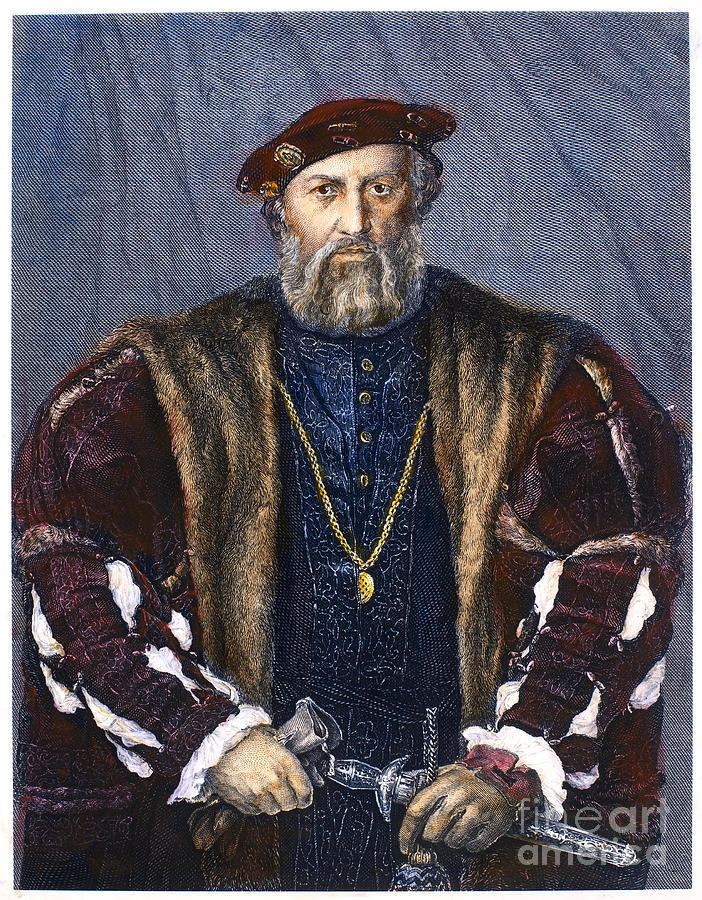 | ||
Died May 27, 1508, Loches, France Children Francesco II Sforza, Maximilian Sforza, Bianca Giovanna Sforza, Giovanni Paolo I Sforza Parents Bianca Maria Visconti, Francesco I Sforza Siblings Galeazzo Maria Sforza, Ascanio Sforza Similar People | ||
Ludovico sforza
Ludovico Maria Sforza (also known as Ludovico il Moro; 27 July 1452 – 27 May 1508), was Duke of Milan from 1494 until 1499, following the death of his nephew Gian Galeazzo Sforza. A member of the Sforza family, he was the fourth son of Francesco I Sforza. He was famed as a patron of Leonardo da Vinci and other artists, and presided over the final and most productive stage of the Milanese Renaissance. He is probably best known as the man who commissioned The Last Supper.
Contents
- Ludovico sforza
- Ludovico Sforza
- Early life
- Regent of Milan
- Marriage and private life
- Rule as regent
- Ascension as Duke of Milan and the Italian Wars
- Downfall and aftermath
- Representations in Popular Culture
- References
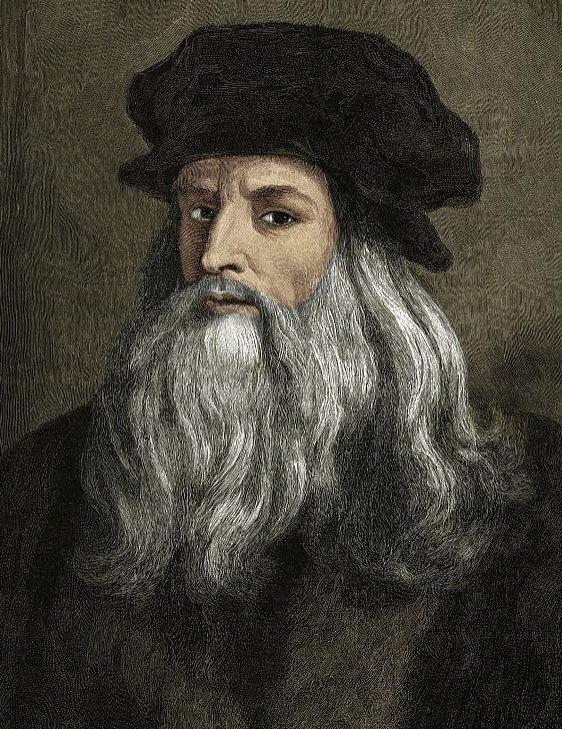
Ludovico Sforza
Early life
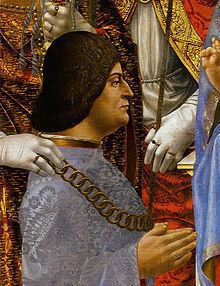
Ludovico Sforza was born on 27 July 1452 at Vigevano, in what is now Lombardy. He was the fourth son of Francesco I Sforza and Bianca Maria Visconti and, as such, was not expected to become ruler of Milan. Nevertheless, his mother, Bianca, prudently saw to it that his education was not restricted to the classical languages. Under the tutelage of the humanist Francesco Filelfo, Ludovico received instruction in the beauties of painting, sculpture, and letters, but he was also taught the methods of government and warfare. He later helped Leonardo paint with pastels.
Regent of Milan
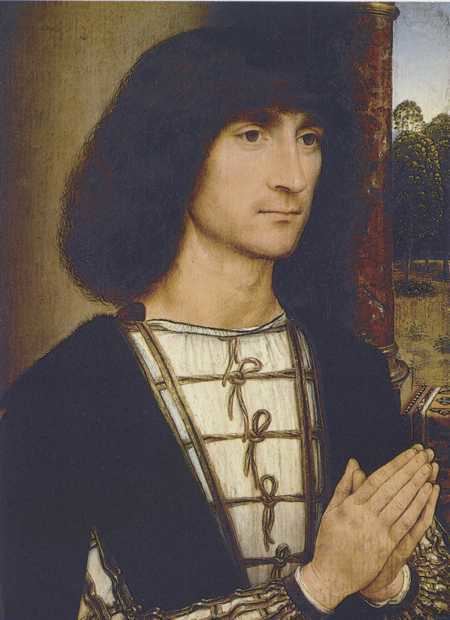
When their father Francesco died in 1466, the family titles devolved upon the dissolute Galeazzo Maria, the elder brother, whilst Ludovico was conferred the courtesy title of Count of Mortara.
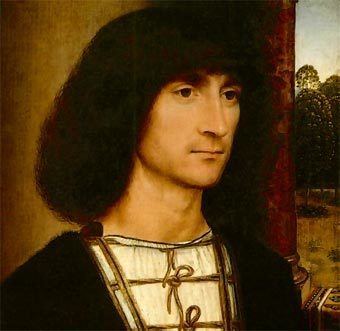
Galeazzo Maria ruled until his assassination in 1476, leaving his titles to his seven-year-old son, Gian Galeazzo Sforza, Ludovico's nephew. A bitter struggle for the regency with the boy's mother, Bona of Savoy, ensued; Ludovico emerged as victor in 1481 and seized control of the government of Milan, despite attempts to keep him out of power. For the following 13 years he ruled Milan as its Regent, having previously been created Duke of Bari in 1479.
Marriage and private life
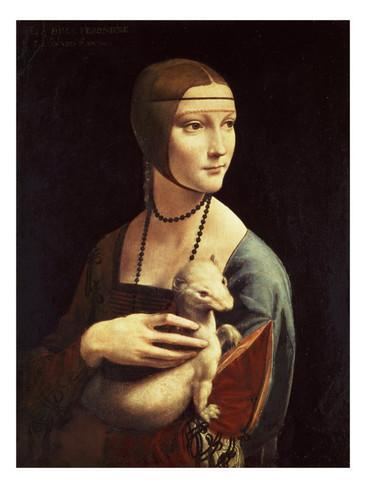
In January 1491, he married Beatrice I d'Este (1475-1497) the youngest daughter of Ercole d'Este Duke of Ferrara, in a double Sforza-Este marriage, while Beatrice's brother, Alfonso d'Este, married Anna Sforza, Ludovico's niece. Leonardo da Vinci orchestrated the wedding celebration. Beatrice and Alfonso’s sister, Isabella d'Este (1474–1539) was married to Francesco II Gonzaga, Marquess of Mantua.
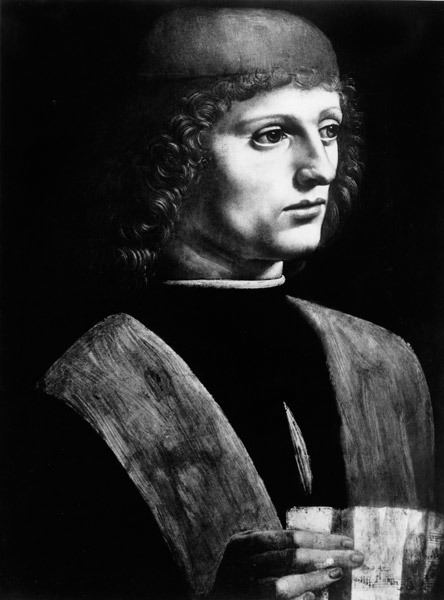
The 15-year-old princess quickly charmed the Milanese court with her joy in life, her laughter, and even her extravagance. She helped to make Sforza Castle a center of sumptuous festivals and balls and she loved entertaining philosophers, poets, diplomats and soldiers. Beatrice had good taste, and it is said that under her prompting her husband's patronage of artists became more selective and the likes of Leonardo da Vinci and Donato Bramante were employed at the court. She would become the mother of Maximilian Sforza and Francesco II Sforza, future Dukes of Milan.
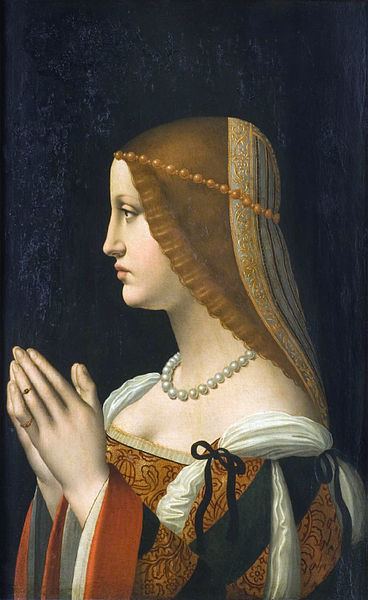
Prior to and throughout the duration of his marriage, Ludovico is known to have had mistresses, although it is thought that he kept only one mistress at a time. Bernardina de Corradis was an early mistress who bore him a daughter, Bianca Giovanna (1483–1496). The child was legitimized and later married to Galeazzo da Sanseverino in 1496. Cecilia Gallerani, believed to be a favourite, gave birth to a son named Cesare on 3 May 1491, in the same year in which he married Beatrice d'Este. Gallerani is identified as the subject of Leonardo da Vinci's Lady with an Ermine – the ermine was the heraldic animal of Ludovico il Moro. Another mistress was Lucrezia Crivelli, who bore him another illegitimate son, Giovanni Paolo, born in the year of Beatrice's death. He was a condottiero. Ludovico also fathered a third illegitimate son, called Sforza, who was born around 1484 and died suddenly in 1487; the boy's mother is unknown.
Rule as regent
Ludovico invested in agriculture, horse and cattle breeding, and the metal industry. Some 20,000 workers were employed in the silk industry. He sponsored extensive work in civil and military engineering, such as canals and fortifications, continued work on the Cathedral of Milan and had the streets of Milan enlarged and adorned with gardens. The universities of Pavia and Milan flourished under him. There were some protests at the heavy taxation necessary to support these ventures, and a few riots resulted.
Ascension as Duke of Milan and the Italian Wars
In 1494, the new king of Naples, Alfonso II, allied himself with Pope Alexander VI, posing a threat to Milan. Ludovico decided to fend him off using France, then ruled by Charles VIII, as his ally. He permitted the French troops to pass through Milan so they might attack Naples. However, Charles's ambition was not satisfied with Naples, and he subsequently laid claim to Milan itself. Bitterly regretting his decision, Ludovico then entered an alliance with Emperor Maximilian I, by offering him in marriage his niece Bianca Sforza and receiving, in return, imperial investiture of the duchy and joining the league against France.
Gian Galeazzo, his nephew, died under suspicious conditions in 1494, and the throne of Milan fell to Ludovico, who hastened to assume the ducal title and received the ducal crown from the Milanese nobles on 22 October. But by then, his luck seemed to have run out. On 3 January 1497, as the result of a difficult childbirth, Beatrice, his wife, died. Ludovico was inconsolable, and the entire court was shrouded in gloom. Ludovico had also hoped by involving the French, and Maximilian I, in Italian politics, he could manipulate the two and reap the rewards himself, and was thus responsible for starting the Italian Wars. At first, Ludovico defeated the French at the Battle of Fornovo in 1495 (making weapons from 80 tons of bronze originally intended for the colossal equestrian statue commissioned by the duke from Leonardo da Vinci in honour of Francesco I Sforza). However, with the death of Charles, the French throne was inherited by his cousin, Louis of Orléans, who became Louis XII of France. The new king had a hereditary claim to Milan, as his paternal grandmother was Valentina Visconti, daughter of Giangaleazzo Visconti, the first Duke of Milan. Hence in 1498, he descended upon Milan. As none of the other Italian states would help the ruler who had invited the French into Italy four years earlier, Louis was successful in driving out Ludovico from Milan. Ludovico managed to escape the French armies and, in 1499, sought help from Maximilian.
Downfall and aftermath
Ludovico returned with an army of mercenaries and re-entered Milan in February 1500. Two months later, Louis XII laid siege to the city of Novara, where Ludovico was based. The armies of both sides included Swiss mercenaries. The Swiss did not want to fight each other and chose to leave Novara. Ludovico was handed over to the French in April 1500.
Louis XII refused to see him and, despite the pleas of the Emperor Maximilian, would not release him. However, he did allow him to roam the grounds of the castle of Lys-Saint-Georges in Berry where he was held, to fish in the moat and to receive friends. When he fell ill, Louis sent him his own physician as well as one of Ludovico's dwarf entertainers to amuse him. In 1504 he was moved to the chateau of Loches where he was given even more freedom. However, in 1508, Ludovico attempted to escape; he was thereafter deprived of all the amenities of life including his books and spent the rest of his life in the underground dungeon at Loches, where he died on 27 May 1508.
Ludovico's struggle with Louis is mentioned briefly in Chapter 3 of Machiavelli's The Prince. The Swiss later executed a soldier from Uri, called Hans Turmann, who had, they claimed, betrayed his employer for money.
The Swiss later restored the duchy of Milan to Ludovico's son, Maximilian Sforza. His other son, Francesco II, also held the Duchy of Milan for a short period. Francesco II died in 1535, sparking the Italian War of 1535, as a result of which Milan passed to the Spanish Empire.
The memory of Ludovico was clouded for centuries by Niccolò Machiavelli’s accusation that he “invited” Charles VIII to invade Italy, paving the way for subsequent foreign domination. The charge was perpetuated by later historians who espoused the ideal of national independence. More recent historians, however, placing the figure of Ludovico in its Renaissance setting, have reevaluated his merits as a ruler and given a more equitable assessment of his achievement.
